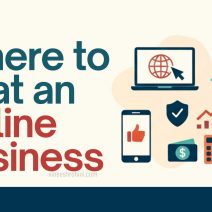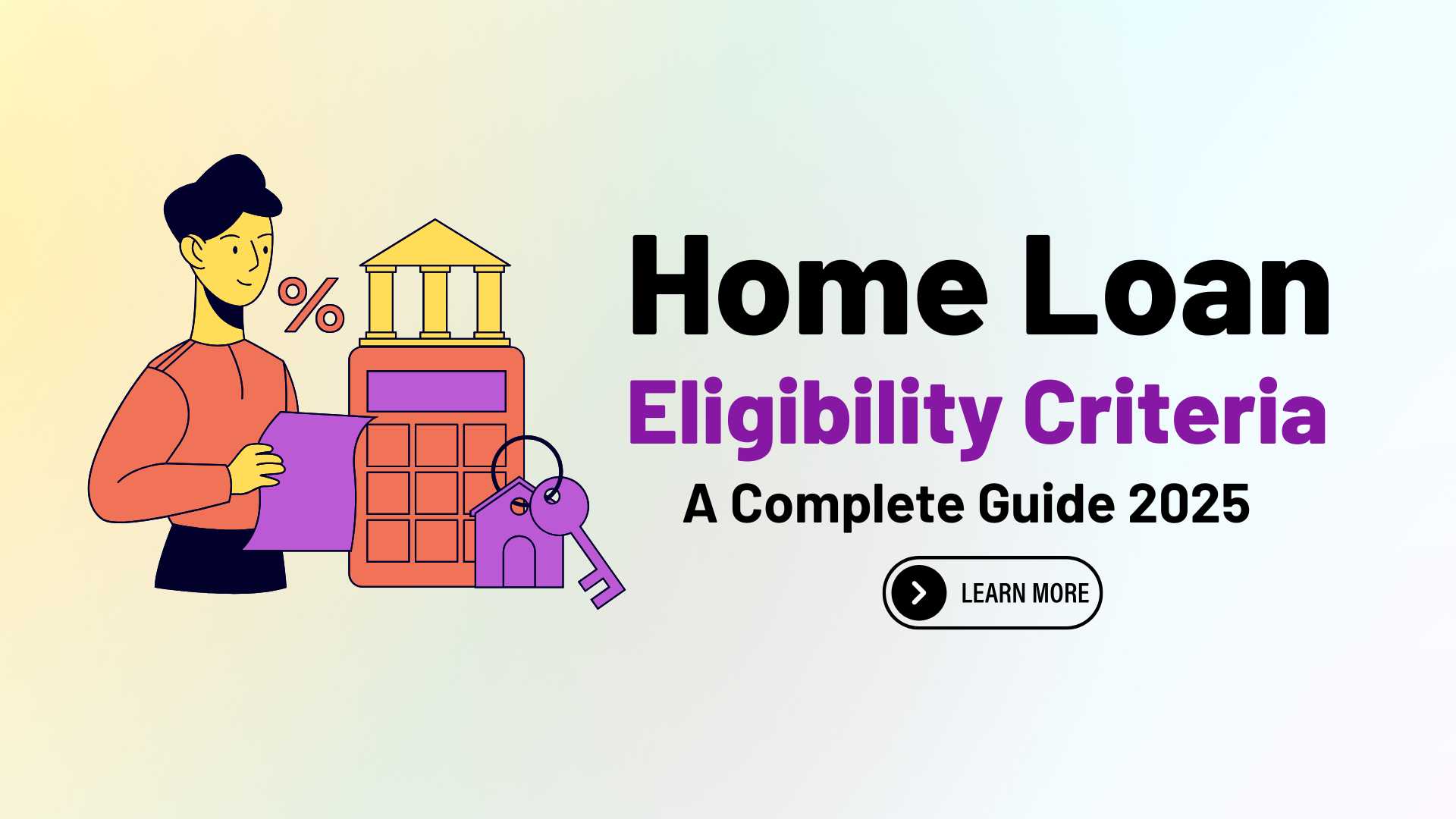Home Loan Eligibility Criteria : In the ever-evolving landscape of the Indian real estate and financial sectors, owning a home remains a fundamental aspiration for millions of individuals and families. With increasing property rates and shifting financial dynamics, securing a home loan has become one of the most practical ways to realize this dream. However, before diving into the home loan application process, understanding the home loan eligibility criteria in 2025 is absolutely crucial. This comprehensive guide explores the major factors that influence your eligibility, how lenders evaluate your profile, and what steps you can take to increase your chances of approval, especially in a competitive financial environment where borrower scrutiny is higher than ever before.
Table of Contents
To begin with, home loan eligibility is essentially a lender’s assessment of whether a borrower can repay the loan amount comfortably over the selected tenure. The evaluation process is multifaceted and based on key parameters such as income level, age, credit score, employment type, repayment capacity, loan-to-value ratio (LTV), and more. As financial institutions like banks, NBFCs, and housing finance companies (HFCs) adopt stricter digital verification and AI-driven loan approval systems in 2025, understanding how these criteria function becomes all the more critical for borrowers aiming to secure the best home loan deal.
1. Income and Employment Stability

The cornerstone of home loan eligibility in 2025 is your monthly income and the stability of your employment. For salaried individuals, lenders prefer applicants employed in government services, reputed corporates, MNCs, or PSU undertakings. For self-employed professionals like doctors, architects, and chartered accountants, consistent income proof supported by income tax returns and audited financials is mandatory.
Also Read : What is a Home Loan and How Does it Work?
Lenders typically expect a minimum net monthly income of ₹25,000 to ₹40,000 depending on the city and the loan amount applied for. Applicants in metro cities may require higher incomes to qualify due to higher property prices.
Your employment history and job stability are equally significant. Salaried applicants must usually have at least 2–3 years of total work experience and at least 6 months with the current employer. Self-employed individuals are generally required to have been in the same line of business or profession for a minimum of 3 years with verifiable income documents. With automation tools used for income analysis in 2025, any inconsistencies in financial reporting or sudden income drops can result in immediate rejection.
2. Age of the Applicant
Age is a critical factor in determining both eligibility and loan tenure. Most lenders set the minimum age at 21 years and the maximum age between 60 to 70 years depending on the lender and the applicant’s employment type. Younger borrowers in their 20s and early 30s often qualify for longer tenures—up to 30 years—which helps reduce their EMI burden and increases their eligibility. Older borrowers, particularly those nearing retirement, may face limitations in terms of tenure and loan amount, unless they have co-applicants with strong income profiles.
Age also plays into the lender’s risk calculations. Younger borrowers are considered lower risk due to a longer earning span. In 2025, some banks are even introducing flexible tenure models based on predictive AI modeling of the borrower’s future income potential, particularly for professionals in fast-growing sectors.
3. Credit Score and Credit History
In 2025, a credit score is not just a financial scorecard; it’s your trustworthiness index in the eyes of financial institutions. Lenders heavily rely on credit scores generated by bureaus like CIBIL, Experian, Equifax, and CRIF High Mark. A score of 750 or above is typically considered excellent and gives the borrower access to the lowest interest rates and maximum loan amounts. A score between 650 and 749 might still get you a loan, but at a higher interest rate or reduced loan-to-value ratio.
More than just the number, lenders also review your credit behavior—such as the number of active loans, repayment history, outstanding credit card balances, and frequency of defaults. In 2025, fintech-based lending platforms integrate AI-powered risk models that flag applicants with erratic repayment behaviors or those with multiple recent loan inquiries. Hence, maintaining a healthy credit history over time is vital.
4. Loan-to-Value Ratio (LTV) in 2025
The loan-to-value ratio refers to the percentage of the property’s value that a bank is willing to finance through the home loan. In India, the RBI regulates this ratio based on the size of the loan:
- Up to ₹30 lakh – LTV can go up to 90%
- ₹30 lakh to ₹75 lakh – LTV up to 80%
- Above ₹75 lakh – LTV up to 75%
In 2025, due to increasing property prices, lenders have become more conservative with high-ticket loans and may cap the LTV at lower percentages to mitigate risk. This means the borrower has to arrange a larger down payment upfront. Additionally, stamp duty, registration charges, and GST are not covered under the loan and must be paid by the borrower separately.
Borrowers can improve their eligibility by opting for a lower LTV, i.e., making a larger down payment. This reduces the lender’s risk and improves the chances of approval.
5. Nature and Type of Property
The type of property you are purchasing plays a crucial role in determining loan eligibility. In 2025, lenders prefer funding ready-to-move-in or under-construction properties from reputed builders that are RERA-registered. Properties with clear legal titles, good resale value, and located in urban or semi-urban areas are preferred.
On the contrary, loans for resale properties, agricultural land, or plots in unauthorized colonies face stricter scrutiny. In some cases, additional legal and technical verification may be required. Also, some lenders have blacklisted builders or projects due to default history or legal issues, which can directly impact your eligibility.
6. Existing Financial Obligations
Your existing EMIs and financial obligations impact your repayment capacity, which directly influences your home loan eligibility. Lenders use a metric called Fixed Obligation to Income Ratio (FOIR) to assess whether you can handle an additional EMI.
In 2025, most banks prefer that the total EMIs (including the proposed home loan EMI) do not exceed 50% of your net monthly income. For high-income individuals, some lenders may extend this up to 65%, but only with a solid credit score and financial profile.
If you have ongoing personal loans, car loans, credit card EMIs, or educational loans, the bank will factor all these into your FOIR. Reducing your other obligations before applying for a home loan can significantly enhance your eligibility.
7. Co-Applicants and Joint Loans
Including a co-applicant—usually a spouse or a family member with a stable income—can help boost your home loan eligibility. In 2025, lenders are increasingly encouraging joint home loans as it allows for a combined income evaluation, thus enabling a higher loan amount or better interest rates. Moreover, both co-borrowers can claim income tax deductions on principal and interest payments under Section 80C and Section 24(b), respectively.
However, it’s important to ensure that the co-applicant also has a good credit score, stable income, and low debt obligations, as their financial health will directly impact the loan approval.
8. Type of Home Loan and Tenure
The type of home loan—fixed interest rate or floating interest rate—as well as the selected loan tenure also affect eligibility. In 2025, most lenders offer flexible repayment structures and tenure options ranging from 5 to 30 years. Longer tenure results in lower EMIs, thereby increasing eligibility, but may also lead to higher total interest paid over the loan term.
Borrowers who opt for step-up EMIs, where the EMI increases gradually in line with expected income growth, may also improve their eligibility for higher loan amounts. However, these plans are generally available only to younger borrowers with proven career growth prospects.
9. Documentation and Digital KYC in 2025

With India’s digital transformation in full swing, most lenders in 2025 use AI-driven digital KYC and paperless documentation processes. Still, standard documentation is mandatory, including:
- PAN Card and Aadhaar Card
- Income Proof (salary slips, bank statements, ITRs)
- Employment Proof (appointment letter, experience certificate)
- Property Documents (sale deed, agreement to sale, allotment letter)
- Credit Report
Make sure all your documents are updated and match across platforms like UIDAI, PAN, and bank records, as discrepancies can delay or even derail your loan approval.
10. Special Considerations in 2025
In 2025, several developments are shaping home loan eligibility dynamics in India:
- Women applicants continue to enjoy preferential interest rates and lower processing fees. Registering the property in a woman’s name can improve eligibility.
- First-time home buyers can avail of PMAY (Pradhan Mantri Awas Yojana) benefits, subject to income ceilings and property size limits.
- Green home loans are gaining popularity, where energy-efficient properties can fetch you special incentives or eligibility relaxations from certain banks.
Moreover, fintech-based lenders are making inroads with more relaxed eligibility criteria but may charge slightly higher interest rates. These lenders often cater to gig workers, freelancers, and those with unconventional income sources who may not qualify for traditional bank loans.
Tips to Improve Home Loan Eligibility in 2025
- Check your credit score before applying and rectify any errors.
- Prepay existing loans or reduce your credit card balances.
- Opt for a longer tenure to reduce EMI burden.
- Add a co-applicant to improve combined income assessment.
- Maintain stable job history and avoid switching jobs frequently.
- Provide accurate documentation to avoid delays or rejections.
- Make a higher down payment to reduce LTV ratio and risk.
Home Loan Eligibility Criteria – Conclusion

Securing a home loan in 2025 is no longer a simple matter of submitting a few documents. Lenders now adopt data-driven, technology-backed assessment models that evaluate a borrower’s creditworthiness in real time. Understanding the home loan eligibility criteria in-depth enables borrowers to prepare in advance and structure their finances in a way that maximizes approval chances and minimizes interest costs.
Buy Now : Day Trading Mastery Course
From income to credit history and from property type to FOIR, every detail counts. The real estate market may continue to fluctuate, but a well-prepared applicant will always stand a better chance of securing a home loan on favorable terms. Whether you’re buying your first home or upgrading to a better one, this guide serves as a foundation for making informed decisions in your home-buying journey in 2025.
Keywords : Home Loan Eligibility Criteria – Home Loan Eligibility Criteria 2025 – Home Loan Eligibility Criteria in India , Home Loan Eligibility Criteria now , Home Loan Eligibility Criteria list








